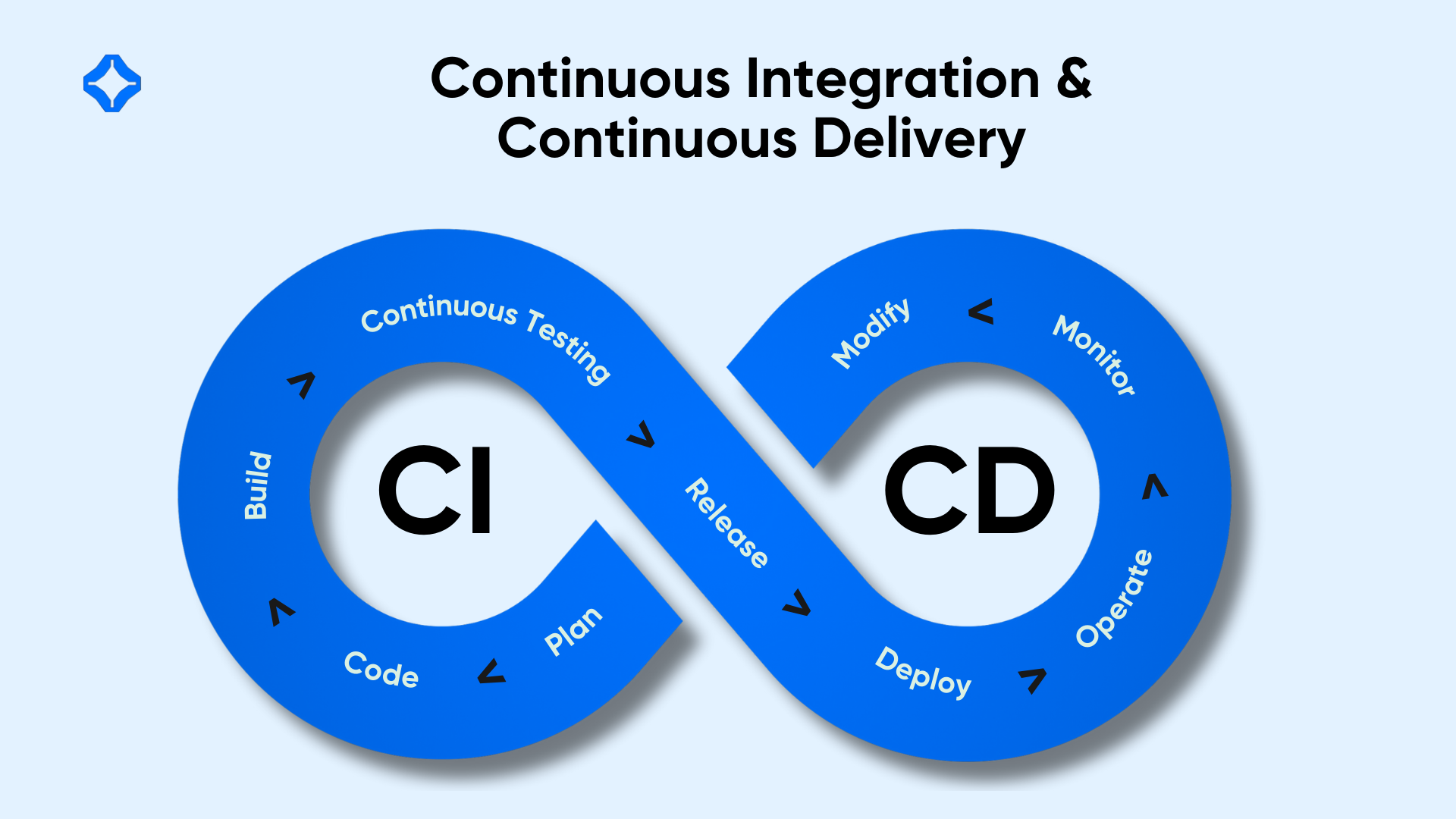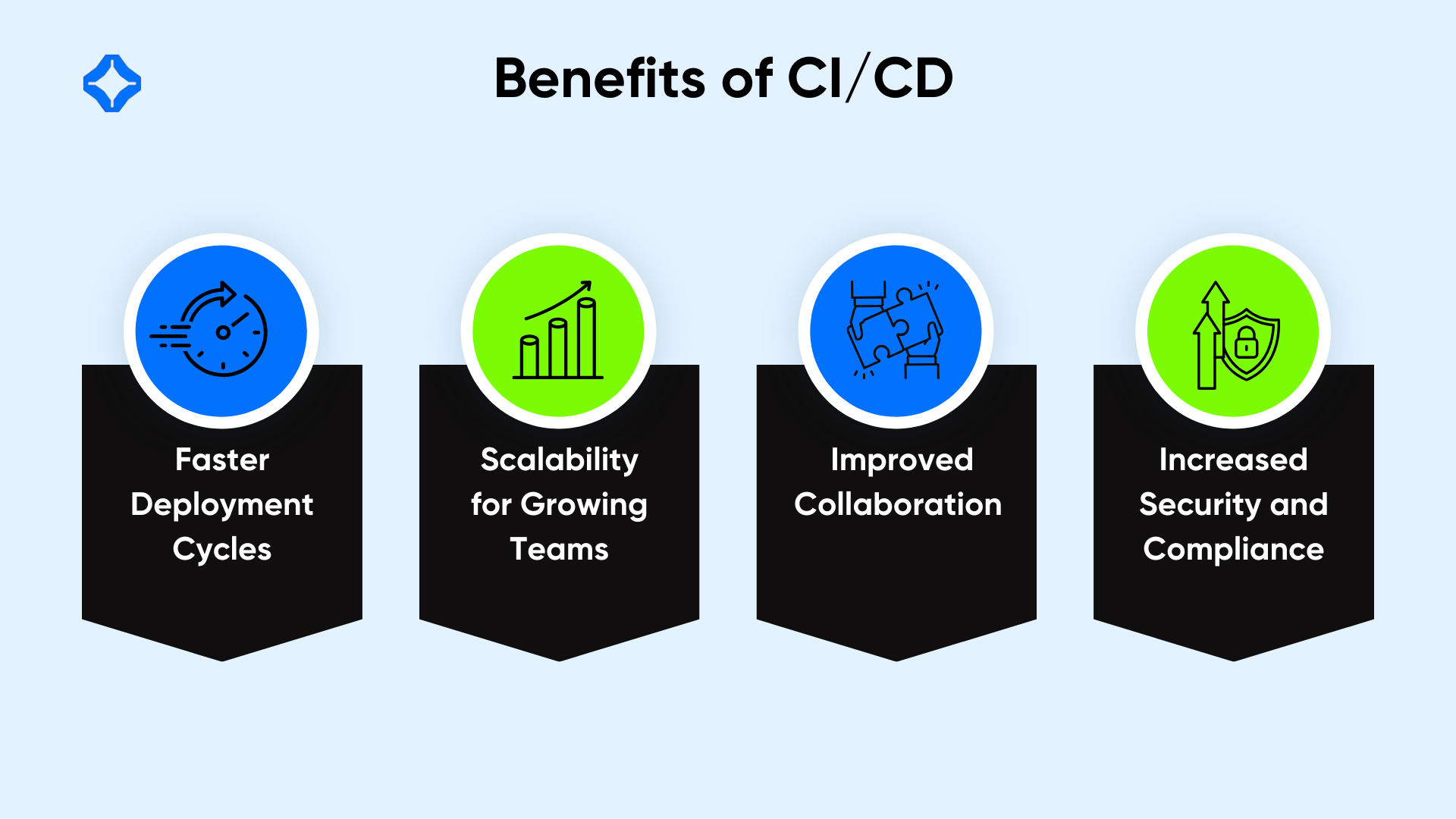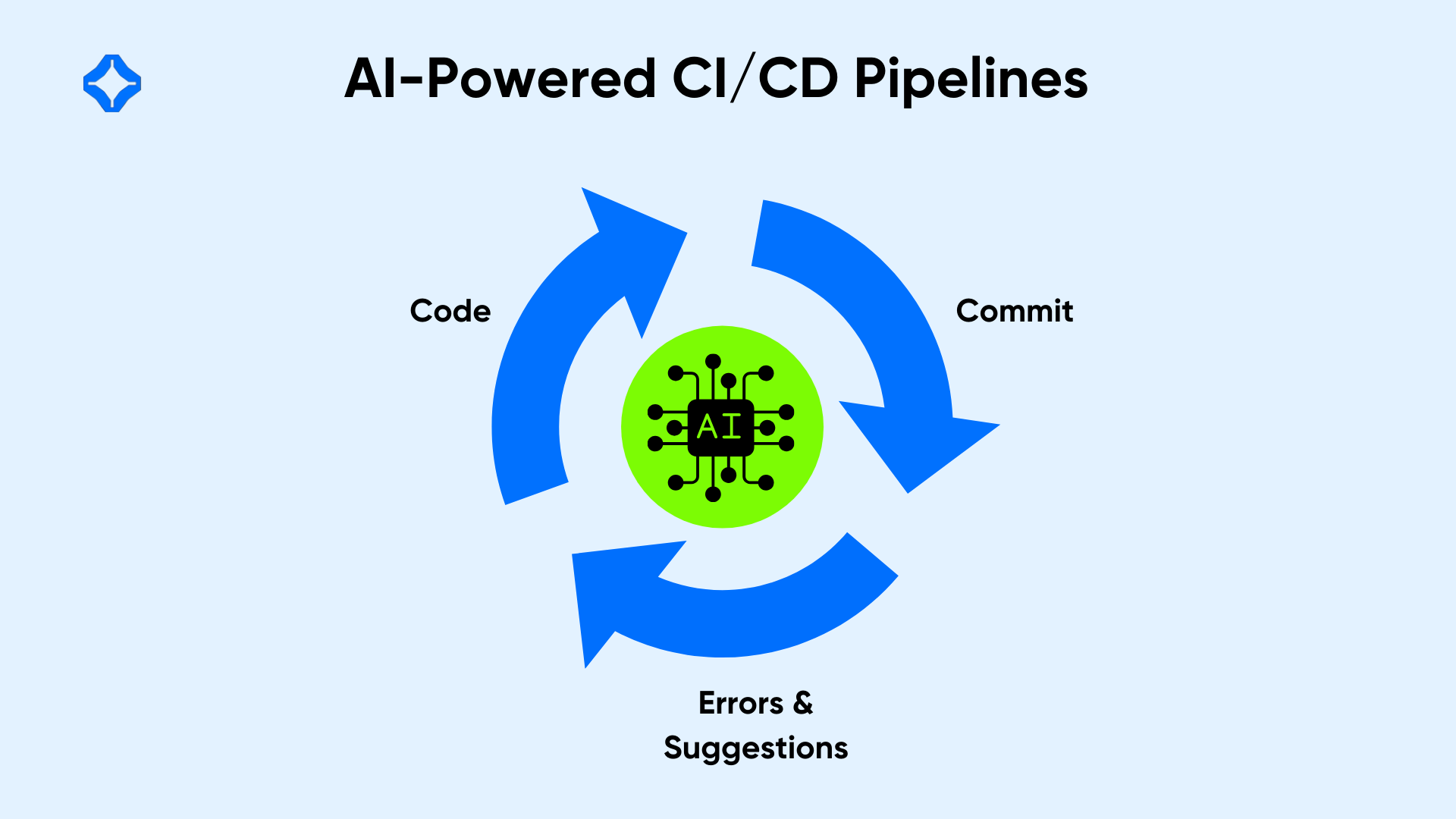CI/CD speeds up feature delivery without compromising code quality. It integrates regular testing, building, and deployment into a seamless pipeline. This practice has grown essential in modern software development, where quick release cycles and high standards matter.
Traditional CI/CD methods sometimes slow progress because they rely on on-premise infrastructure that needs significant maintenance. Teams must handle server uptime, manual environment setup, and outdated tooling, which can delay faster releases.
SaaS platforms offer a different approach. They deliver essential CI/CD services in a ready-to-use format, free from physical hardware constraints. This setup reduces configuration complexity and promotes rapid release cycles.
Companies now see these hosted options as a direct route to handle builds, tests, and deployments under one roof. Engineers can focus on writing robust code instead of worrying about server patches. As businesses rely more on quick iterations, SaaS-based CI/CD stands out as a dependable solution that aligns with evolving demands.

What is CI/CD?
CI/CD is an approach that unifies development and operations by automating tasks. It ensures code changes blend smoothly, and updates reach users on time. Let’s explore the components.
Definition of Continuous Integration (CI)
Continuous Integration involves merging code changes from multiple coders into a shared repository multiple times a day. It includes automated checks that catch bugs early.
When engineers commit new code, the system runs tests and signals any errors. This immediate feedback pushes teams to correct mistakes right away, preventing defects from the development process. The shared repository develops collaboration and keeps everyone aligned.
Automated tests are vital to this process. They confirm that fresh changes do not break existing functions. If an error appears, the team addresses it before merging the code. As a result, codebases remain stable, and teams can adopt quick development cycles without risking product quality.
Definition of Continuous Delivery (CD)
Continuous Delivery takes the integrated code and prepares it for release. It automates the deployment process so teams can roll out updates whenever they see fit. Code passes through various checkpoints like staging and user acceptance testing before deployment.
These steps confirm that updates work in real scenarios. Once everything checks out, developers can deploy their changes to production with a single action. Faster updates are the main highlight of CD. When everything is in place, teams can push new features and bug fixes more often.
This approach keeps applications stay current and keeps users satisfied. It also reduces the chaos often associated with large, infrequent releases. By pairing CI with CD, organizations shorten feedback loops and gain the flexibility to adjust quickly in a changing market.
The Role of SaaS Platforms in CI/CD
SaaS platforms simplify CI/CD by delivering ready-made infrastructure, integrated tools, and automated workflows. These platforms help developers concentrate on code rather than fighting setup challenges.
Cloud-Based Infrastructure
SaaS platforms run on remote servers that users access through the internet. This means teams do not need to buy or maintain physical machines. SaaS platforms can scale resources up or down based on project needs.
If a build requires extra power, they can request it from the cloud without manual hardware upgrades. This flexibility suits organizations that face unpredictable demand or want to avoid large capital costs.
Anywhere access is another advantage. Remote and distributed teams can log in and see the same CI/CD pipeline status, logs, and metrics. This arrangement increases cooperation and consistency. Since the provider handles server maintenance, engineers gain extra time to refine code, improve tests, and create new features.
Integration with Development Tools
SaaS platforms often link with popular repositories, ticket systems, and testing frameworks. Users can connect Git repositories, track tasks in Jira, and update Slack channels automatically. This streamlined environment unites version control, issue management, and collaboration under a single umbrella.
Integration removes the need to toggle between different tools or set up complex connections manually. This seamless flow helps developers track every phase of the development cycle. They know where the code stands, which tasks are pending, and which tests have passed.
Quick feedback loops help teams respond to bugs or feature requests without delay. This connection shows that CI/CD is an ongoing process rather than a separate task.
Automation in Build, Test, and Deploy Pipelines
Automation sits at the heart of CI/CD on SaaS platforms. Developers can define workflows that run when certain actions occur, like pushing code to a branch. The platform builds, tests, and packages applications with minimal user input.
Teams can also automate security scans, code reviews, and notifications. By removing repetitive tasks, they reduce errors and save time. These pre-built workflows bring consistent procedures for every release, lowering the odds of manual mistakes.
If the system detects a failed test or a suspicious anomaly, it alerts the team. Developers then address the problem before proceeding to the next stage. This approach boosts confidence in each release and encourages frequent deliveries.
Key Benefits of SaaS Platforms for CI/CD

SaaS-driven CI/CD solutions bring clear advantages to modern teams. They provide speed, adaptability, cooperation, and safety, all within a straightforward interface.
Faster Deployment Cycles
Manual steps delay deployment when developers must handle environment configuration or set up servers. SaaS platforms cut these obstacles. With one button click, the code moves from staging to production.
This direct pipeline supports an agile process where features reach end users quickly. Frequent releases then become part of a normal event instead of a stressful event.
Scalability for Growing Development Teams
A small startup may only need a few build agents, but a global enterprise may require many. SaaS platforms adjust effortlessly to these shifts in demand. They handle extra workloads during peak times and scale down after the rush ends.
This feature saves money for companies that only pay for extra resources when needed. Teams can remain confident that any new developer or feature will fit into the existing pipeline without disruption.
Improved Collaboration Across Teams
SaaS platforms give teams a unified dashboard to see each stage of the pipeline. Developers, quality assurance professionals, and project managers track progress in real time. By utilizing remote project management, distributed teams can streamline CI/CD workflows efficiently.
Clear visibility of builds, tests, and code changes reduces confusion and miscommunication. It also supports easy handoffs and better planning. When everyone has the same information, they can address problems faster and keep projects on schedule.
Enhanced Security and Compliance
SaaS providers often include security features such as automatic backups, data encryption, and checks for regulatory compliance. They design their environments to meet strict standards like SOC 2 and GDPR. Also, ensuring robust SaaS cloud security is essential for protecting sensitive data in CI/CD environments.
This built-in protection removes the heavy lifting from internal teams that would otherwise manage compliance alone. With monitoring tools and safeguards in place, businesses have fewer worries about accidental data leaks.
Popular SaaS Platforms Supporting CI/CD
Several well-known services cater to organizations seeking hosted CI/CD. Their user-friendly interfaces and solid reputations attract both small and large teams.
Jenkins (Cloud-Based Options)
Jenkins is a beloved automation server that can run almost any pipeline. While it started as a self-hosted solution, cloud-based Jenkins now exists through managed providers. This setup delivers the familiar Jenkins environment without the strain of maintaining servers. Teams can keep existing Jenkins configurations and plugins in a flexible, hosted package.
GitHub Actions
GitHub Actions places CI/CD directly within GitHub’s ecosystem. Developers only need a YAML file to define steps like build, test, and deploy. The platform runs these tasks whenever code is pushed or pulled.
It integrates neatly with GitHub repositories, allowing quick feedback on pull requests. The convenience of a single platform for both version control and CI/CD appeals to many teams.
CircleCI
CircleCI is known for efficient builds and clear reporting. It provides hosted containers that scale based on workload demands. Developers can set up workflows for various branches, automate tests, and cache dependencies for faster runs. Its parallelism features let multiple builds run simultaneously, saving time for larger codebases or complex test suites.
GitLab CI/CD
GitLab includes a complete DevOps toolset, with CI/CD at its center. It integrates version control, issue tracking, and container management in one place. The platform offers hosted plans for teams that want to skip infrastructure setups. It also supports advanced features like auto-scaling runners and built-in security scans. GitLab’s single interface keeps projects organized and easy to manage.
Challenges in Adopting SaaS for CI/CD
While SaaS platforms help many organizations, teams should recognize potential complications. Addressing these concerns can ensure a smooth transition.
Dependence on Stable Internet Connectivity
Because SaaS services run in the cloud, teams must rely on consistent internet access. If network issues arise, pipeline tasks may fail or stall. This can disrupt development schedules or leave updates half-finished. Organizations should plan for outages with backup options and carefully monitor service status.
Cost Management for Large Teams
SaaS billing often scales with the number of users, build minutes, or storage usage. When teams grow, monthly costs can rise. Budget planning becomes essential to avoid surprise expenses.
Some providers offer pay-as-you-go models, which may help smaller teams. Still, large companies need to review usage patterns and optimize workflows to keep spending in check.
Data Security Concerns
Teams should confirm that a chosen SaaS platform follows industry security standards. Sensitive code and intellectual property reside in cloud-based servers, which may raise red flags. Checking for encryption, compliance certifications, and strong access controls can provide peace of mind. Companies must also consider local regulations, like GDPR, if they store user data on these platforms.
Emerging Trends in SaaS CI/CD Platforms
As new methods appear, the CI/CD landscape shifts. SaaS providers continue rolling out modern capabilities, driving innovation for development teams.
AI-Powered Pipelines

Some platforms now include machine learning tools that analyze build logs, predict errors, and offer suggestions. These smart systems spot patterns in test failures and reduce the time spent troubleshooting. AI automation in CI/CD pipelines helps detect errors faster, optimize workflows, and reduce manual intervention. They may even propose fixes for recurring issues. Although AI is still growing, it shows potential to refine the entire pipeline.
Serverless CI/CD
Serverless computing handles tasks based on events. CI/CD platforms with serverless capabilities spin up resources for builds or tests only when needed, then shut them down automatically. This arrangement can help teams save on costs and reduce overhead. It also scales instantly, so developers never wait for available resources.
Observability Gains More Attention
Modern pipelines need immediate feedback at every stage of delivery. Observability tools capture performance metrics, logs, and pipeline states, giving teams a clear snapshot of events. These insights help developers spot slowdowns or unusual patterns quickly and drive data-informed improvements.
How to Choose the Right SaaS CI/CD Platform
Selecting the right platform involves balancing technical compatibility, usability, and cost. Each team has unique needs, so a customized approach is wise.
Integration with Your Tech Stack
A good CI/CD tool must fit seamlessly with existing workflows. Teams often use Jira for tickets, Slack for communication, and Docker for containerization. The chosen SaaS solution should sync with these tools. Smooth integrations reduce the need for manual data entry and provide a single source of truth for all development tasks.
Ease of Use and Customization
User-friendly platforms help teams adapt quickly. If a CI/CD product requires specialized knowledge, onboarding might stall. Look for an interface that is simple and lets teams define custom steps. Adaptable workflows can accommodate advanced needs while remaining approachable for new users.
Cost and Scalability
Teams should compare subscription plans, factoring in costs that rise with usage. Some platforms charge for build minutes, while others price plans based on user counts or data storage. Plan ahead by estimating growth.
A small team could start with a basic tier and expand to a premium level once it outgrows its current setup. Think about how well the platform can handle heavier workloads and additional developers.
Conclusion
CI/CD powers today’s rapid development cycles. It ensures that code changes move seamlessly from commit to deployment, enabling frequent releases that keep customers engaged. SaaS platforms improve this process by delivering ready-made infrastructure, integrated toolchains, and automated workflows. Instead of juggling hardware and manual configurations, teams can focus on creating strong features and fixing bugs quickly.
SaaS solutions also simplify collaboration across distributed teams. Everyone can review the same dashboards and track build progress. This unity shortens feedback loops and minimizes release-related errors.
Security features often come with industry standards, reducing the burden of compliance. As the software development process continues to evolve, adopting SaaS-based CI/CD can give organizations an edge. By selecting the right platform and building effective pipelines, teams can deliver high-quality products at a steady pace, meeting customer expectations in an ever-changing environment.
FAQs
Platforms often connect with Git for version control, Docker for containers, and popular testing suites like Selenium or Jest. They may also integrate with services such as Jira for project management and Slack for alerts.
SaaS solutions remove the need to buy physical servers. Teams can upgrade resources on demand and pay only for what they use. This arrangement lowers upfront costs and streamlines new developer onboarding.
Choose providers that certify compliance with recognized standards, like SOC 2 or ISO 27001. Also, confirm that they use data encryption, conduct regular audits, and offer options for role-based access control.
Yes, but it takes planning. Teams must review pipeline definitions, environment variables, and integration points. They should also decide how to move existing build logs or artifacts to the new system. Early preparation and thorough testing can smooth this transition.
Some providers offer limited free tiers with basic services. These are great for small projects or beginners. As usage or features grow, teams may need to upgrade to a paid plan.